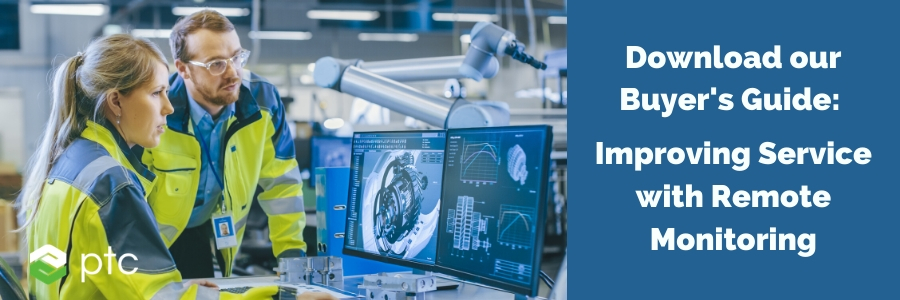How to Make a More Efficient Online Condition Monitoring System
Condition monitoring is fundamental to the smooth operation of a manufacturing plant. A clear view of machine health can improve everything from production quality to delivery schedules. The more data you have, the better you are able to minimize downtime, extend machine life, and reduce defects. That’s why many manufacturers are moving from the traditional manual, weekly checks to an online condition monitoring system that produces a constant stream of data.
Condition monitoring is the key to manufacturing efficiency
Factory floor machinery is complex and expensive, as is the process of maintaining and servicing it; achieving optimal operating efficiency (OEE) is a delicate balance of maximizing productivity today without unnecessarily curtailing total lifespan. Achieving that balance requires a detailed understanding of their condition, both now and over time. The better you understand the state of a machine, the better you can detect the small discrepancies that forewarn potential faults.
Optimal manufacturing efficiency is attained by keeping machinery running in peak condition. That means addressing problems as soon as, or even before, they occur. The only way to know that action is required is to keep a persistent eye on machine health. If you can catch performance aberrations early enough, you can respond with preventative maintenance. This is beneficial because it not only minimizes downtime; it means you have the flexibility to respond at a time when technicians are available, parts have been sourced, and there isn’t a tight deadline looming.
When it comes to data collection, automation beats manual every time
Using an automated condition monitoring system offers a number of advantages when compared with manual collection, including:
- Real-time metrics: Online condition monitoring systems give you real-time machine health information, meaning you can react immediately to any signs of degradation or out-of-spec performance—rather than acting on week-old information.
- Alert notification: Many online condition monitoring systems will enable you to set your own alerts on crucial KPIs, so you never miss a potential problem or opportunity for preventative servicing.
- Complete data: Traditional condition monitoring may take incremental snapshots of data. Conversely, the constant data stream of an online condition monitoring system gives a more complete picture of a machine’s performance over time, dramatically enhancing the accuracy of your trend analysis.
- Accurate data: Manual data collection is prone to error. The expense and effort often mean it’s also performed irregularly. Because an online condition monitoring system takes its metrics directly from the sensors—without a fallible human in between—users can be 100% confident in the readings.
A remote online condition monitoring system enables unique benefits
With the advent of the industrial internet of things, many machine condition monitoring systems have adopted the Software as a Service (SaaS) model. That is, rather than maintaining the system yourself, you can outsource it to a specialized provider. For many manufacturers, this presents much-needed efficiency, for three key reasons.
First, maintaining an online condition monitoring system requires considerable IT resources and expertise that may not be available—or economical—internally. Remote monitoring puts the system in the hands of a centralized provider with the advantage of economies of scale. It also enables you to focus on your core competencies, rather than concerning yourself with maintaining a complex IoT system.
Second, although the best remote monitoring systems provide intuitive, role-based dashboards, considerable expertise is still required to get the best results from the system. As experts from manufacturing and service age out of the workforce, a remote monitoring system can help stem the tide and make newer employees more competent. Specifically, data and active notifications help newer workers understand machine performance, prevent failures, and as needed, service machines. This is true whether remote monitoring is being used by a machine’s owners, such as a plant manager overseeing shop floor assets, or the machine’s builder, who designed and sold the machine, and ensures that it remains online and functional for the owner.
Third, it ensures that service is administered when - and only when - necessary. Manual monitoring creates a latency in awareness that can allow machine failures to arise. Preventative maintenance can eliminate those latencies, but at the cost of servicing equipment that doesn’t require attention. Remote online condition monitoring provides the best of both systems. It ensures that strained systems don’t fly under the radar, while eliminating the cost and disruption of unnecessary service.
In short, condition monitoring is necessary for sustaining the operations of a manufacturing plant. Online condition monitoring is the best way to deliver that key function—through a larger, more complete, and more accurate dataset; vastly amplifying the benefits of condition monitoring. Remote monitoring does so with the least possible drain on internal resources—meaning you can achieve a better outcome, while reducing maintenance costs.
To find out more about how a remote machine condition monitoring system can help you transform your OEE, read our improving-service-remote-monitoring.
